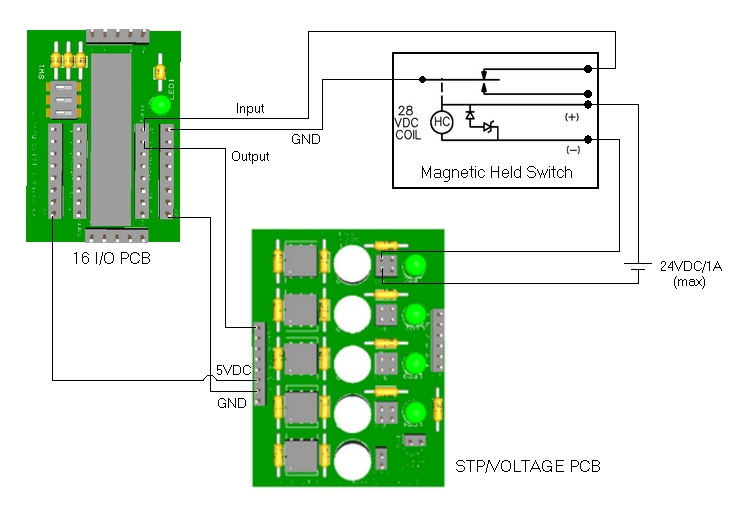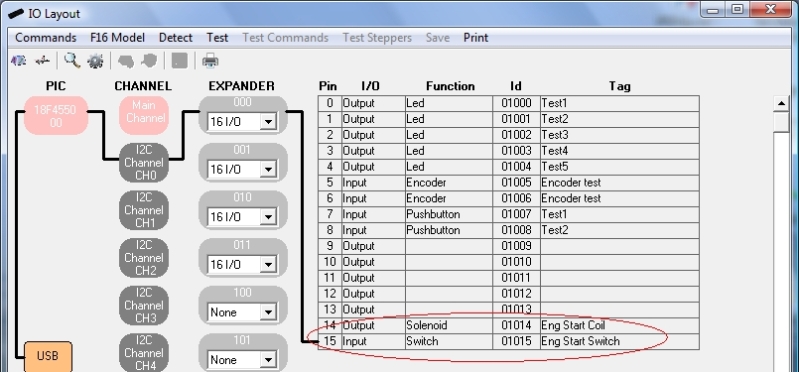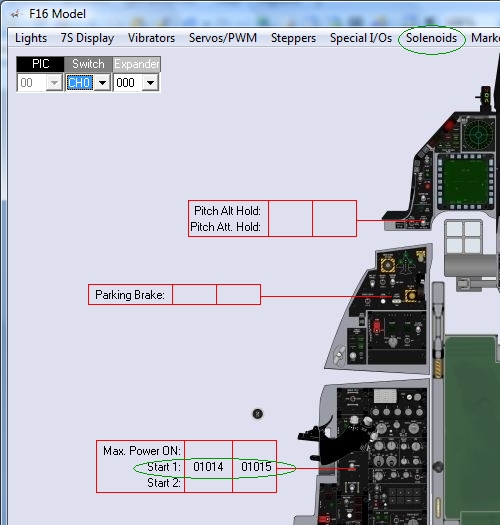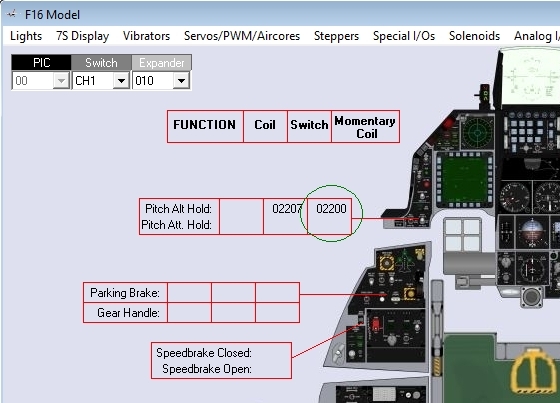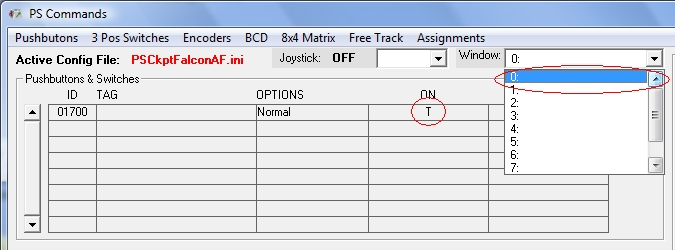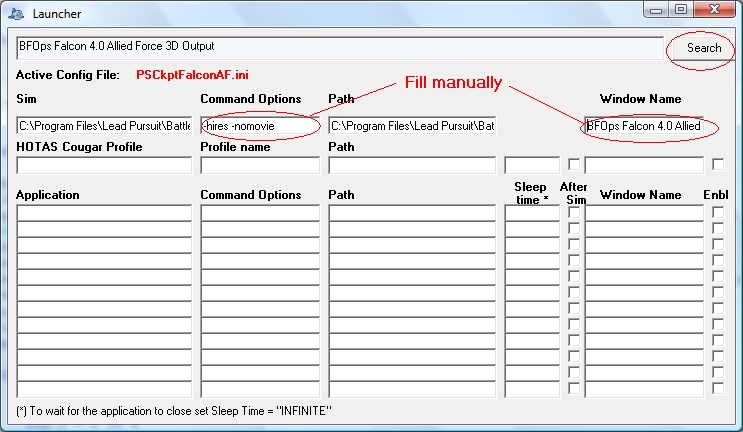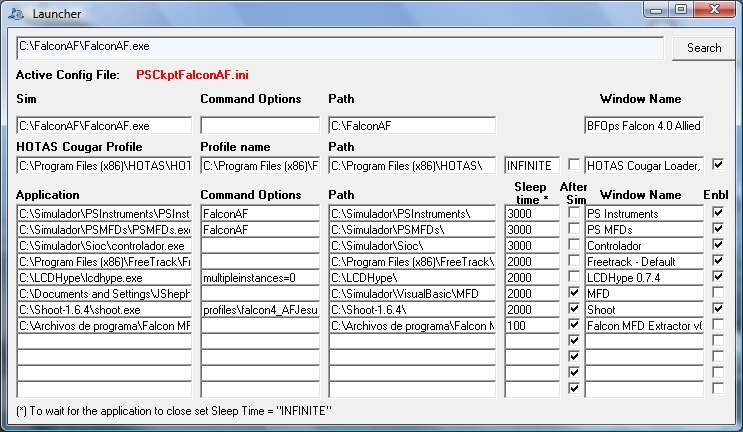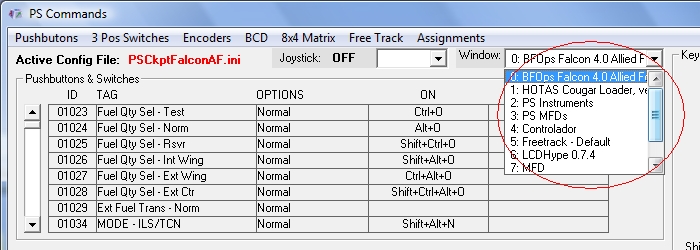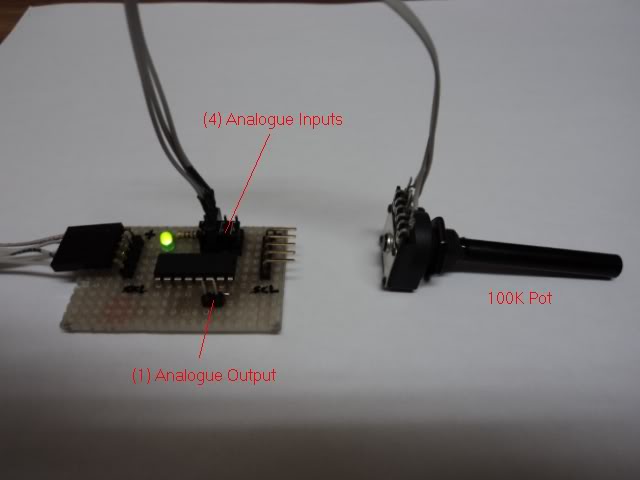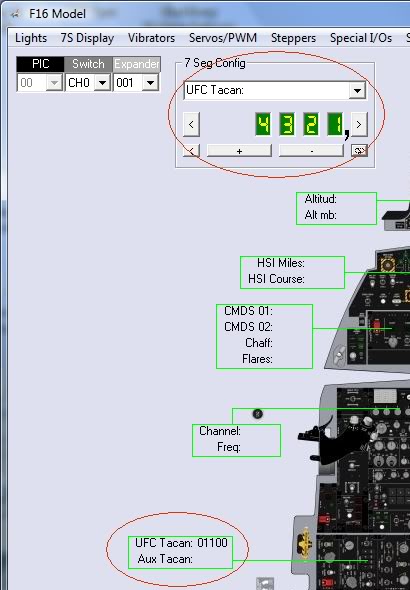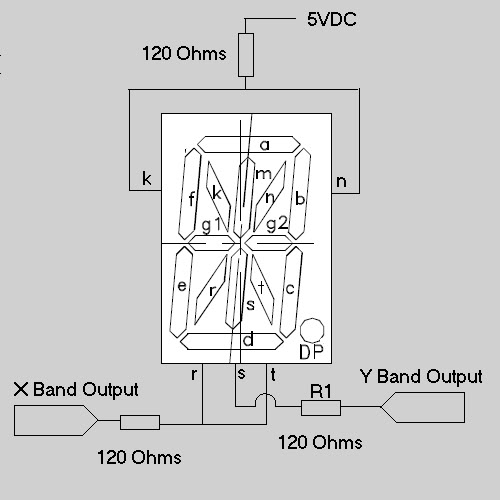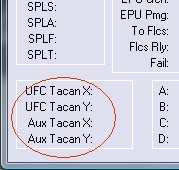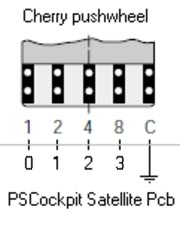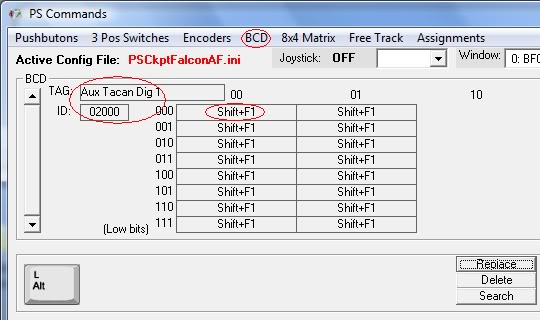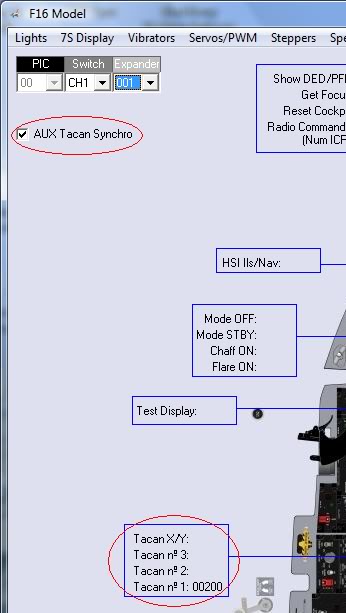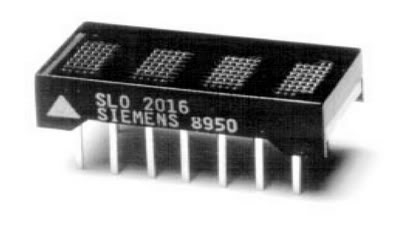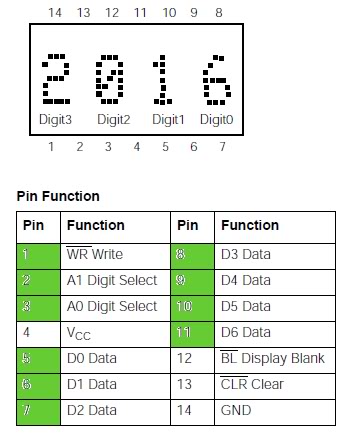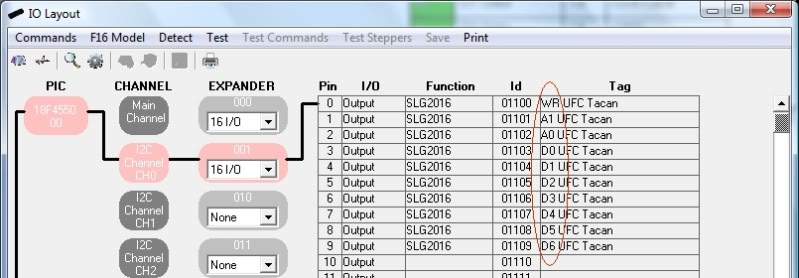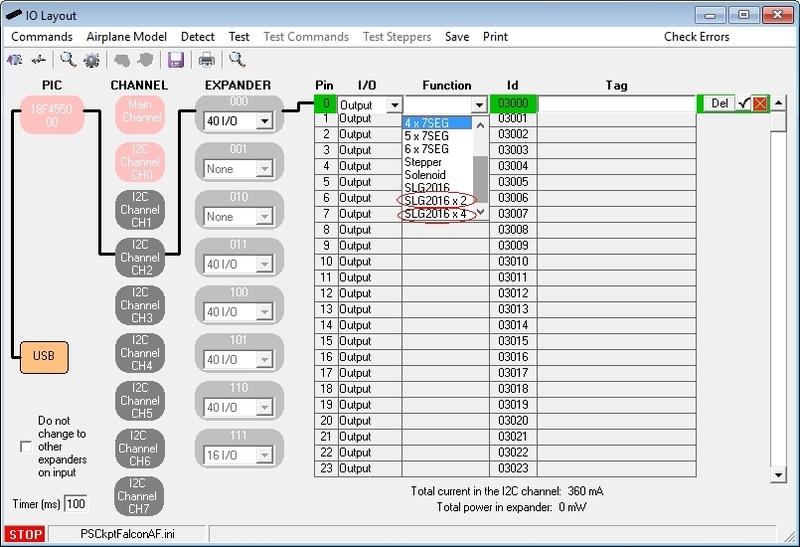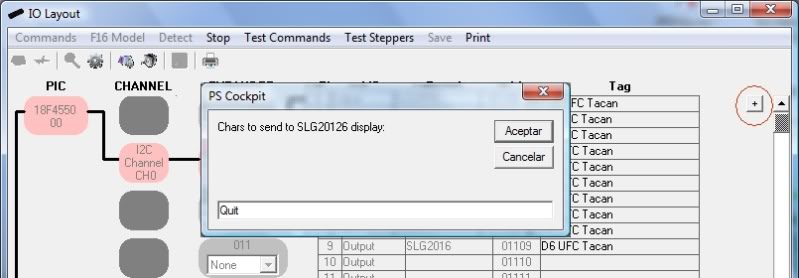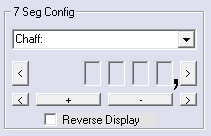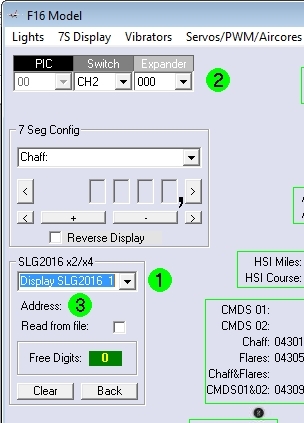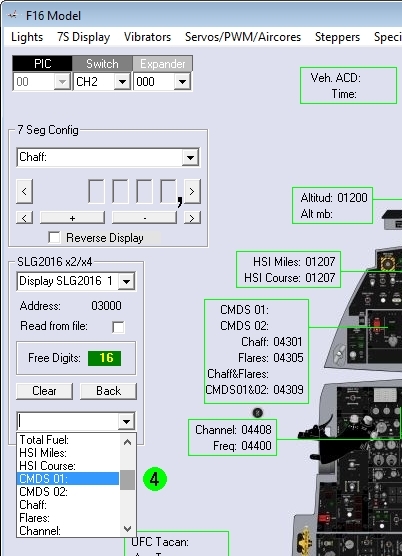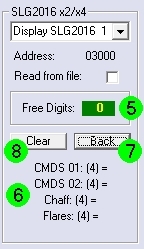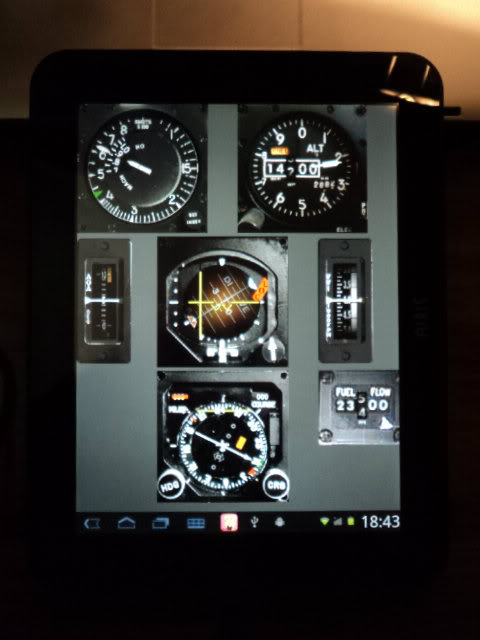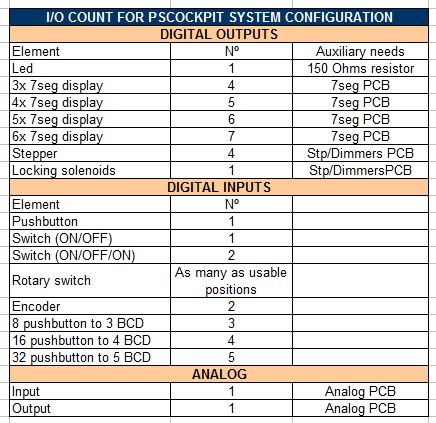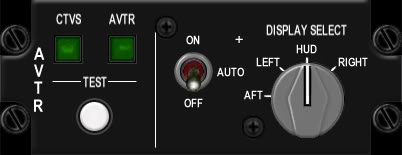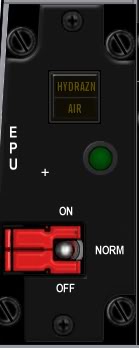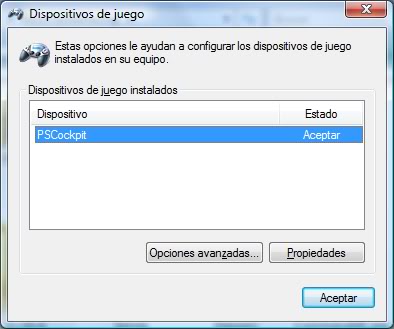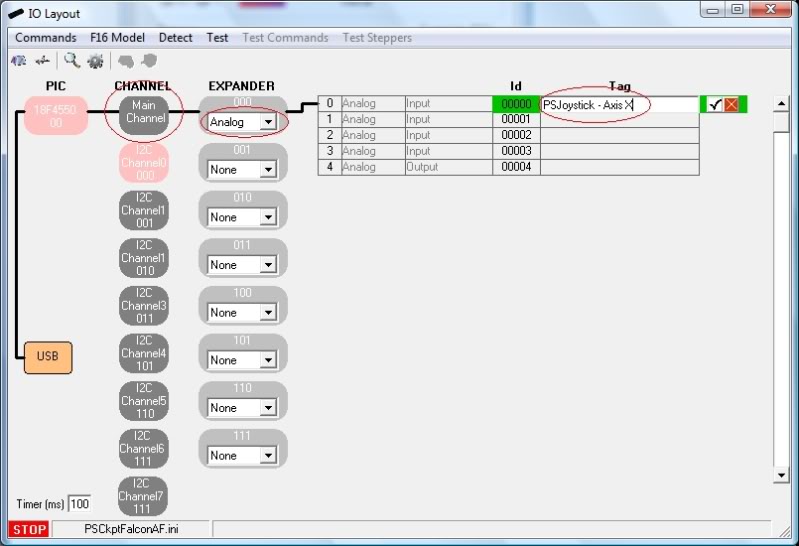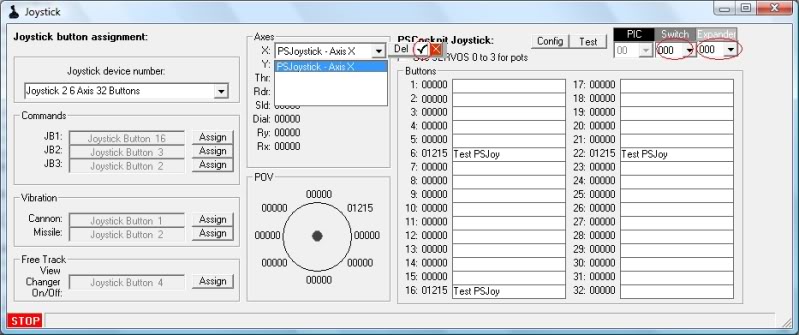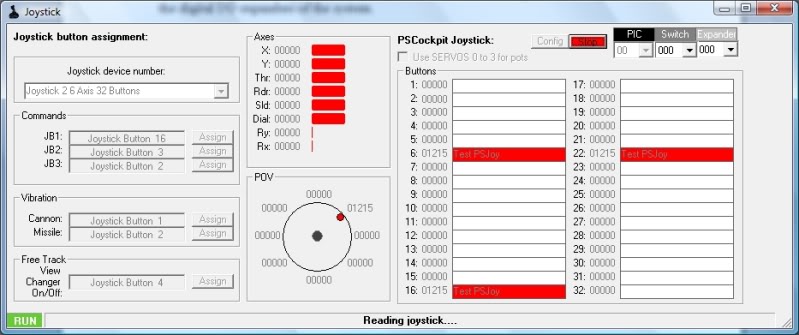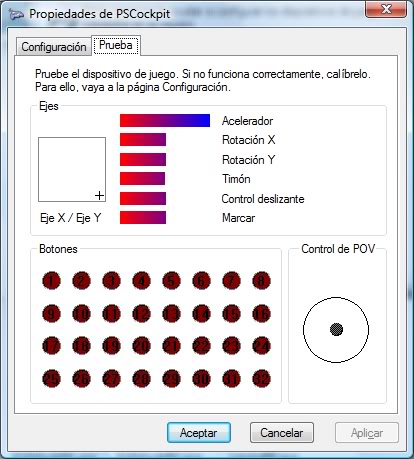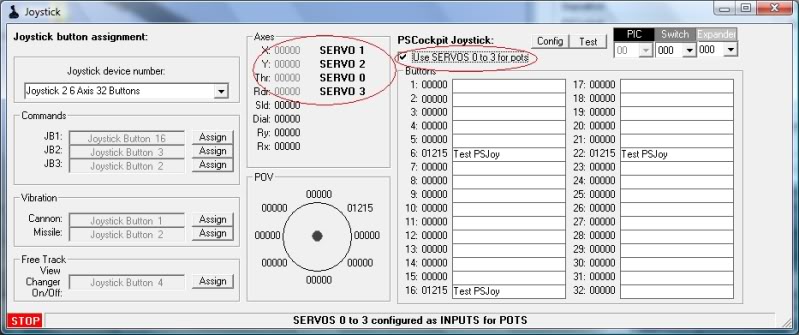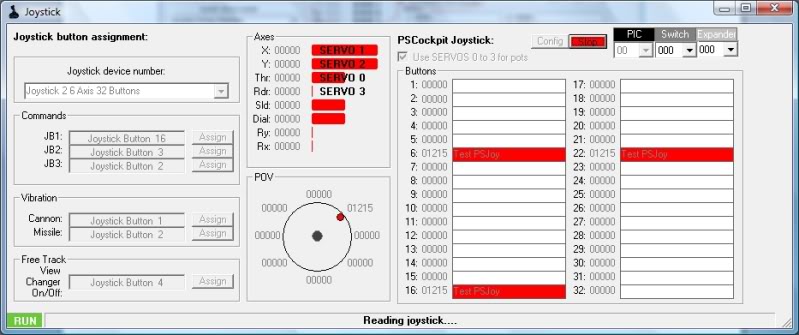I have modified the firmware of the PSCockpit Main Board to correct some bugs and to add the future analogue expanders functionality. You don’t need to update the firmware if you are not affected.
Firmware v.1.2 Change Log:
- Corrected bug not able to read inputs from expanders connected to channels 4 to 7. This bug only applies on early versions of the firmware. I will send a PM to those people that should apply the firmware update because of this reason.
- Corrected bug of commands sent to sim after "First read". This bug was only affecting the 40I/O expander.
- Included new functionality to read analog expanders connected to Main Channel.
The firmware update can only be done with Windows XP/Vista operating system.
Download the file here http://www.mediafire.com/download.php?bjigkkydd15dntz, unrar into any folder and follow the instructions of the file FirmwareUpdate.pdf.
Regards,
Shep
Monday, November 19, 2012
Monday, October 22, 2012
New PS UDP Setup File
For the ones who are having problems installing PS UDP in your computer, specially Windows 7 users, I have improved the installation Setup program. Hope it helps!
You can download all the files for PSUDP here: PSUDP
Installation notes:
- Unrar the file
- Install PS UDP in your computer with PSUdpSetUp.exe
- Install PSGauges.apk in all your favorite android devices
- Enjoy
Regards,
Shep
You can download all the files for PSUDP here: PSUDP
Installation notes:
- Unrar the file
- Install PS UDP in your computer with PSUdpSetUp.exe
- Install PSGauges.apk in all your favorite android devices
- Enjoy
Regards,
Shep
Monday, October 8, 2012
Version 0.8.0.2 of the PSCockpit Software
PSCockpit v.0.8.0.2 Changelog
- "IOCARD 7SEG DISPLAYS NOT CONFIGURED" message removed
- Aux Tacan Channel 7 segment diaplays now working
- UFC Tacan Channel 7 segment displays now working
- Added one digit to UFC Tacan channel --> 0 = Channel X, 1 = Channel Y
- Added one digit to Aux Tacan channel --> 0 = Channel X, 1 = Channel Y
- Added X and Y UFC Tacan channel outputs for alphanumeric display
- Added X and Y Aux Tacan channel outputs for alphanumeric display
- Added aux tacan channel in syncrho with sim
- Altitud mB now working
- Fixed steppers now working on 40 I/O board
- 4-Digit 5x7 Dot Matrix Alphanumeric Intelligent Display SLG2016 implemented
- Key input directly from keyboard in Command page
- English (US) keyboard added for commands
- Added Falcon and hexadecimal key codes for commands
- Added 8x4 pushbuttons matrix functionality
- Added PCF8591P analog I2C inputs/outputs funcionality
- Fixed a problem with serial the interface RS232 when loading .key
You can download it at http://www.mediafire.com/download.php?ng9j471cxon03nq
To install this new version the old version must be installed. Just unrar the files an put them in your PSCockpit directory.
If you need to register the FSCSC.ocx in windows, double click on the fsdt_32bit.reg for 32 bits OS or fsdt_64bit.reg for 64 bits OS.
Kind regards,
Shep
- "IOCARD 7SEG DISPLAYS NOT CONFIGURED" message removed
- Aux Tacan Channel 7 segment diaplays now working
- UFC Tacan Channel 7 segment displays now working
- Added one digit to UFC Tacan channel --> 0 = Channel X, 1 = Channel Y
- Added one digit to Aux Tacan channel --> 0 = Channel X, 1 = Channel Y
- Added X and Y UFC Tacan channel outputs for alphanumeric display
- Added X and Y Aux Tacan channel outputs for alphanumeric display
- Added aux tacan channel in syncrho with sim
- Altitud mB now working
- Fixed steppers now working on 40 I/O board
- 4-Digit 5x7 Dot Matrix Alphanumeric Intelligent Display SLG2016 implemented
- Key input directly from keyboard in Command page
- English (US) keyboard added for commands
- Added Falcon and hexadecimal key codes for commands
- Added 8x4 pushbuttons matrix functionality
- Added PCF8591P analog I2C inputs/outputs funcionality
- Fixed a problem with serial the interface RS232 when loading .key
You can download it at http://www.mediafire.com/download.php?ng9j471cxon03nq
To install this new version the old version must be installed. Just unrar the files an put them in your PSCockpit directory.
If you need to register the FSCSC.ocx in windows, double click on the fsdt_32bit.reg for 32 bits OS or fsdt_64bit.reg for 64 bits OS.
Kind regards,
Shep
Saturday, September 22, 2012
HOW TO Implement the Magnetic Held Switches in the PSCockpit System
Some of the switches of our cockpit may have electric coils to hold the contact of the switch at a certain position. When the coil is deactivated the switch returns to the OFF position.
This behaviour is easily implemented with the PSCockpit System. We will need to wire the contact of the switch to a I/O Satellite Pcb and the coil to a Stp/Other Voltages Pcb as the coil will need other voltage and more current to activate. The electric schema could be the following:
The configuration of this wiring in the PSCockpit Software is the following:
You can easily test the circuit (input and output individually) in Test mode.
In order to link the switch with its coil, go to the F16 Model and select the Solenoids page. Enter the corresponding switch and coil Id´s:
Of course, you want the switch to send the keystroke to the sim, so, go to Commands page and configure the switch:
Now, when the switch is activated, the command will be sent to the sim and the coil will be energized. Depending on the switch function, the coil will be deactivated by the PSCockpit Software when in Run mode.
Edited on April, 10th, 2016
--------------------------------------------------------------------------------------------------------------------------
For homemade magnetic switches -the ones which needs only momentary energy to set back the switch to the original position- you have to set the coil output in the field called "Momentary coil":
The momentary coil output works as follows:
- Switch is activated ---> momentary coil remains de-energized
- Condition to return switch to original position is met ---> momentary coil is energized
- Switch returns to original position by means of the coil ---> momentary coil is de-energized
Of course, is you return the switch to the original position manually, the momentary coil is never energized.
---------------------------------------------------------------------------------------------------------------------
Regards,
Shep
This behaviour is easily implemented with the PSCockpit System. We will need to wire the contact of the switch to a I/O Satellite Pcb and the coil to a Stp/Other Voltages Pcb as the coil will need other voltage and more current to activate. The electric schema could be the following:
The configuration of this wiring in the PSCockpit Software is the following:
You can easily test the circuit (input and output individually) in Test mode.
In order to link the switch with its coil, go to the F16 Model and select the Solenoids page. Enter the corresponding switch and coil Id´s:
Of course, you want the switch to send the keystroke to the sim, so, go to Commands page and configure the switch:
Now, when the switch is activated, the command will be sent to the sim and the coil will be energized. Depending on the switch function, the coil will be deactivated by the PSCockpit Software when in Run mode.
Edited on April, 10th, 2016
--------------------------------------------------------------------------------------------------------------------------
For homemade magnetic switches -the ones which needs only momentary energy to set back the switch to the original position- you have to set the coil output in the field called "Momentary coil":
- Switch is activated ---> momentary coil remains de-energized
- Condition to return switch to original position is met ---> momentary coil is energized
- Switch returns to original position by means of the coil ---> momentary coil is de-energized
Of course, is you return the switch to the original position manually, the momentary coil is never energized.
---------------------------------------------------------------------------------------------------------------------
Regards,
Shep
Wednesday, September 19, 2012
HOW TO Assign Key Strokes to Different Programs in PSCockpit Software (Launcher)
When you are assigning your key strokes of each of your pushbuttons and switches connected to the PSCockpit expanders, you can select in which window of the system you want that keystroke to be sent to. This is made by selecting in the “Window” dropdown list the correct window name:
If your list of windows is empty, you can configure it in then Launcher page of the PSCockpit Software.
The Launcher is a configuration page where you can add any program to be run when you are going to play your favourite sim. In this way, you don’t have to run manually all the required programs for your cockpit, the Launcher will take care of them!
To fill the Launcher page you can manually fill the text fields or you can place the cursor on the desire field and click on the “Search” button to select the desire program. The program will automatically select the program and the path. You have to fill manually the command options and the window name:
You can even select the proper profile of the Hotas Cougar. The launcher will check if the Hotas Cougar is loaded with that profile, and if it is not, it will load it for you.
In the Launcher page you will find the following tags:
- Application: The name of the program to be launched.
- Command options: The command options to be included in the launched program
- Path: The path from where the program have to be run
- Sleep time: The time in ms you want to wait for the next program to be run. Put INFINITE if you want the Laucher to wait until the program has successfully run.
- After Sim: Check this box if you want this program to be launcher after the sim.
- Window name: The name of the window once the program has started. To know the window name of a program, minimize the program, go to the Windows Task Bar and look for the window name of the program. If you don’t see the complete window name, place the mouse on the program window of the Task Bar and wait for the Tip Text to appear.
- Enbl: Check this box if you want the program to be launched. Unchecking this box the launcher will skip this program.
As the applications can be launched before or after the sim, they have to be placed in the correct sequence. This is an example of how has to be done:
Usual Windows Names are:
- BMS: Falcon BMS
- OpenFalcon: F4 3D Output
- Falcon AF: BFOps Falcon 4.0 Allied Force 3D Output
- Red Viper: F4 3D Output
- MSFSX: Microsoft Flight Simulator X
Once you have filled the Launcher page you can go back to the Commands page and you will see the windows names in the Windows dropdown list:
Now, you can send any keystroke to other normal programs used when you are flying with your pushbuttons and switches: FreeTrack, Shoot, TeamSpeak, …
Finally, to run the Launcher you have to click on the “Launch Sim” icon instead of the “Run” icon from the PSCockpit Console page.
Regards,
Shep
If your list of windows is empty, you can configure it in then Launcher page of the PSCockpit Software.
The Launcher is a configuration page where you can add any program to be run when you are going to play your favourite sim. In this way, you don’t have to run manually all the required programs for your cockpit, the Launcher will take care of them!
To fill the Launcher page you can manually fill the text fields or you can place the cursor on the desire field and click on the “Search” button to select the desire program. The program will automatically select the program and the path. You have to fill manually the command options and the window name:
You can even select the proper profile of the Hotas Cougar. The launcher will check if the Hotas Cougar is loaded with that profile, and if it is not, it will load it for you.
In the Launcher page you will find the following tags:
- Application: The name of the program to be launched.
- Command options: The command options to be included in the launched program
- Path: The path from where the program have to be run
- Sleep time: The time in ms you want to wait for the next program to be run. Put INFINITE if you want the Laucher to wait until the program has successfully run.
- After Sim: Check this box if you want this program to be launcher after the sim.
- Window name: The name of the window once the program has started. To know the window name of a program, minimize the program, go to the Windows Task Bar and look for the window name of the program. If you don’t see the complete window name, place the mouse on the program window of the Task Bar and wait for the Tip Text to appear.
- Enbl: Check this box if you want the program to be launched. Unchecking this box the launcher will skip this program.
As the applications can be launched before or after the sim, they have to be placed in the correct sequence. This is an example of how has to be done:
Usual Windows Names are:
- BMS: Falcon BMS
- OpenFalcon: F4 3D Output
- Falcon AF: BFOps Falcon 4.0 Allied Force 3D Output
- Red Viper: F4 3D Output
- MSFSX: Microsoft Flight Simulator X
Once you have filled the Launcher page you can go back to the Commands page and you will see the windows names in the Windows dropdown list:
Now, you can send any keystroke to other normal programs used when you are flying with your pushbuttons and switches: FreeTrack, Shoot, TeamSpeak, …
Finally, to run the Launcher you have to click on the “Launch Sim” icon instead of the “Run” icon from the PSCockpit Console page.
Regards,
Shep
Saturday, September 15, 2012
ANALOGUE PCF8591P EXPANDER
We have another expander for our system: Analogue PCF8591P with 4 analogue inputs and 1 analogue output, 8 bits resolution.
You can connect up to 8 analogue expanders to the I2C Main Channel of the PSCockpit board. Please refer to HOW TO use analog inputs with the PS Cockpit System (PSJoystick) for configuration here.
The firmware has to be upgraded and the software will come with this feature since revision 1.0.0.
This is how the new baby looks like:
Regards,
Shep
You can connect up to 8 analogue expanders to the I2C Main Channel of the PSCockpit board. Please refer to HOW TO use analog inputs with the PS Cockpit System (PSJoystick) for configuration here.
The firmware has to be upgraded and the software will come with this feature since revision 1.0.0.
This is how the new baby looks like:
Regards,
Shep
Wednesday, August 29, 2012
HOW TO get your Tacan channels working with the PSCockpit System
If you are planning to use 7 segment displays to display the UFC and Aux Tacan Channel you have tree options in the PSCockpit system:
- Using (4) 7seg. displays.
- Using (3) 7 segment displays and (1) 14 segment alphanumeric display
- Using 4-Digit 5x7 Dot Matrix Alphanumeric Intelligent Display SLG2016
And the last option, only for the Aux Comm Tacan Channel, using the Cherry pushwheels.
Option 1: Using (4) 7seg. displays.
Configure your 7s displays as usual in the IO Layout:
Select the correct Id in the F16Model page by clicking on 7S Display and make the configuration of your 4 digits as shown in the picture:
Now, when you run your sim ,the PSCockpit software will display the Tacan channel in the first 3 digits of the display and the last one will show a 0 when the band X is selected in the sim and will show a 1 when the band Y is selected in the sim.
Option 2: Using (3) 7 segment displays and (1) 14 segment alphanumeric display
To use this option you must try to get 14 segment displays with the same dimensions that the 7 segment displays, the same colour and the same brightness. This could be difficult to find.
Remember that all segment display have to be Common Cathode as well as the 14 segment display.
I have found the Kingbright PSC39-21GWA is a little bigger that the Avago HSDP-7803 and probably can be use it. But, sorry, I didn’t try it.
As before, configure your 7s displays as usual in the IO Layout, this time using a 3x7 Seg. Display.
Now we have to connect the segments. We are going to use to a 5VDC power supply. To limit the current to 25 mA we will use a 120 Ohms resistor. This resistor can be change a little 80-160 Ohms to get the same brightness as the rest of the 7 seg. displays. The wiring will be the following:
The resistor R1 might need also some adjustment to get the same brightness as the others.
Now, if we activate the X band output, will see an X on the display and if we activate the Y band output, will see and Y on the display.
The X and Y band outputs can be selected on the PSCockpit Software in the F16 Model page (Lights) as shown in the picture:
Option 3: Using 4-Digit 5x7 Dot Matrix Alphanumeric Intelligent Display SLG2016
Proceed as a normal 4-Digit 5x7 Dot Matrix Alphanumeric Intelligent Display SLG2016 like explained in the following post:
http://psfalcon.blogspot.com.es/2012/08/how-to-use-5x7-dot-matrix-alphanumeric.html
Option 4: Using Cherry pushwheels.
The Cherry pushwheels are selector switches with very small dimensions for front-mounting. The ones we are going to use are the PE series with 10 switching positions BCD.
I have selected the Cherry PE C - A - 3 - 4 - 00 (4 digits BCD complete with end caps) and 3 spacers 609-0760 which gives me a total dimensions of 24x45 mm.
You may want to order also (2) stops 609-0013 to limit the first and last digit of your auxiliary tacan channel. Look at the Cherry catalogue for other options as illumination.
To set the Cherry pushwheel for realism you will have to dismantled under your responsibility the first digit to change the number strip to 0-1-0-1-01-…. and X-Y-X-Y-… for the last digit.
To connect each of the pushwheel to the PSCockpit System, go to I/O Layout page and select “16 to 4 BCD” inputs in a location with 4 consecutive inputs free:
We have to wire each of the pushwheel as shown in the picture according to the pins selected in the IO Layout page:
To test the Cherry pushwheel click on test and verify that the inputs are ON according to the following true table:
Once we have tested each of the pushwheels we have to put the commands to be sent to the sim. For this, go to the Commands page, select BCD, select the correct ID for each pushwheel and fill the matrix with the command that changes the Aux Tacan channel in your sim, in this case, for digit number one, Shift+F1.
If you want to get your Aux Tacan channel in synchrony with the sim, go to F16 Model page, select Special I/Os, fill the data of the Aux Tacan channel and check the checkbox “Aux Tacan Synchro”:
Now, when you enter the cockpit the tacan channel of the sim will display your cockpit tacan channel. Yihaaaaaa.
Regards,
Shep
- Using (4) 7seg. displays.
- Using (3) 7 segment displays and (1) 14 segment alphanumeric display
- Using 4-Digit 5x7 Dot Matrix Alphanumeric Intelligent Display SLG2016
And the last option, only for the Aux Comm Tacan Channel, using the Cherry pushwheels.
Option 1: Using (4) 7seg. displays.
Configure your 7s displays as usual in the IO Layout:
Select the correct Id in the F16Model page by clicking on 7S Display and make the configuration of your 4 digits as shown in the picture:
Now, when you run your sim ,the PSCockpit software will display the Tacan channel in the first 3 digits of the display and the last one will show a 0 when the band X is selected in the sim and will show a 1 when the band Y is selected in the sim.
Option 2: Using (3) 7 segment displays and (1) 14 segment alphanumeric display
To use this option you must try to get 14 segment displays with the same dimensions that the 7 segment displays, the same colour and the same brightness. This could be difficult to find.
Remember that all segment display have to be Common Cathode as well as the 14 segment display.
I have found the Kingbright PSC39-21GWA is a little bigger that the Avago HSDP-7803 and probably can be use it. But, sorry, I didn’t try it.
As before, configure your 7s displays as usual in the IO Layout, this time using a 3x7 Seg. Display.
Now we have to connect the segments. We are going to use to a 5VDC power supply. To limit the current to 25 mA we will use a 120 Ohms resistor. This resistor can be change a little 80-160 Ohms to get the same brightness as the rest of the 7 seg. displays. The wiring will be the following:
The resistor R1 might need also some adjustment to get the same brightness as the others.
Now, if we activate the X band output, will see an X on the display and if we activate the Y band output, will see and Y on the display.
The X and Y band outputs can be selected on the PSCockpit Software in the F16 Model page (Lights) as shown in the picture:
Option 3: Using 4-Digit 5x7 Dot Matrix Alphanumeric Intelligent Display SLG2016
Proceed as a normal 4-Digit 5x7 Dot Matrix Alphanumeric Intelligent Display SLG2016 like explained in the following post:
http://psfalcon.blogspot.com.es/2012/08/how-to-use-5x7-dot-matrix-alphanumeric.html
Option 4: Using Cherry pushwheels.
The Cherry pushwheels are selector switches with very small dimensions for front-mounting. The ones we are going to use are the PE series with 10 switching positions BCD.
I have selected the Cherry PE C - A - 3 - 4 - 00 (4 digits BCD complete with end caps) and 3 spacers 609-0760 which gives me a total dimensions of 24x45 mm.
You may want to order also (2) stops 609-0013 to limit the first and last digit of your auxiliary tacan channel. Look at the Cherry catalogue for other options as illumination.
To set the Cherry pushwheel for realism you will have to dismantled under your responsibility the first digit to change the number strip to 0-1-0-1-01-…. and X-Y-X-Y-… for the last digit.
To connect each of the pushwheel to the PSCockpit System, go to I/O Layout page and select “16 to 4 BCD” inputs in a location with 4 consecutive inputs free:
We have to wire each of the pushwheel as shown in the picture according to the pins selected in the IO Layout page:
To test the Cherry pushwheel click on test and verify that the inputs are ON according to the following true table:
Once we have tested each of the pushwheels we have to put the commands to be sent to the sim. For this, go to the Commands page, select BCD, select the correct ID for each pushwheel and fill the matrix with the command that changes the Aux Tacan channel in your sim, in this case, for digit number one, Shift+F1.
If you want to get your Aux Tacan channel in synchrony with the sim, go to F16 Model page, select Special I/Os, fill the data of the Aux Tacan channel and check the checkbox “Aux Tacan Synchro”:
Now, when you enter the cockpit the tacan channel of the sim will display your cockpit tacan channel. Yihaaaaaa.
Regards,
Shep
Friday, August 24, 2012
HOW TO use 5x7 Dot Matrix Alphanumeric Intelligent Display SLG2016
The SLG2016 is a four digit 5x7 dot matrix display module. The integrated circuit contains memory, a 128 ASCII ROM decoder, multiplexing circuitry and drivers. The character set consists of 128 special ASCII characters.
Display interconnection is very straightforward, look for the spec sheet.
In the PSCockpit System you have to connect 10 outputs from the 16 or 40 I/O boards directly to the diplay inputs as shown in the figure in green. All other pins have to be connected as per its specification sheet.
To select this type of display in the PSCockpit system, go to IO Layout page and select the SLG2016 from the Function dropdown list. The chosen output must have nine more free outputs. Once accepted, you will see which output has been assigned to do the correct wiring:
Edited on April 11th, 2016
------------------------------------------------------------------------------------------------------------------------
It is possible to group (2) or (4) SLG2016 displays in a row with adding just one wire more for each display.
You can select this grouping from the dropdown list:
------------------------------------------------------------------------------------------------------------------------
To test the display, once in Test Mode, click on the “+” symbol and you will be prompted to enter the desire text to be displayed. Once you accept, the display will show the text.
To configure the display to run from your favourite sim, go to F16 Model page and proceed as a normal 7 Segment display like explained in the following post:
How to 7-segment displays
Edited on April 11th, 2016
-------------------------------------------------------------------------------------------------------------------------
For the SLG2016 the above formatting should be 4 digits:
Once you have defined the length of the values you are going to use in the SLG2016 displays, if you use the SLG2016 grouping options (x2) or (x4), you have to group also the values of the sim you will be sending to the displays.
This grouping configuration is made in the 7 Segment Displays menu of the Airplane Model page of the PSCockpit Software doing the following procedure:
1. Select the SLG2016 slot to save the configuration with the dropdown list. There are a maximum of 10 slots.
2. Select the expander address where the SLG2016 are connected
3. Click on Address and select the SLG2016 group. The first pin address will appear besides the Address label, the free digits will be updated and a drop down list will appear at the end of the frame.
4. Select the first magnitude that will appear in the left most digits of the SLG2016 group. Once selected the magnitud the dropdown list will change to orange where you can select one of the operations available to change the magnitude value (=, *10, *100,....,/10, /100,...).
6. At the end of the frame you will see the list of the magnitudes of the group with the digits in brackets and the operation that will be made to each of the magnitudes.
7. You can use the Back command to delete the last magnitude from the list.
8. You can use the Clear command to delete all the list.
Regards,
Shep
Saturday, June 9, 2012
PSCockpit Quick Guide
It will help you on wiring the system in your cockpits.
Download from: http://www.mediafire.com/view/?6kacpd31w3bvvve
Regards,
Shep
Monday, April 23, 2012
PS Gauges Update
Hi everyone,
Got my Airis OnePad 970 yesterday!!!
Here is a picture with the center console gauges with PSUdp software:
I made a little update on PSGauges to fix a display problem regarding the different dip of the device.
You can download it here: Update
Regards,
Shep
Got my Airis OnePad 970 yesterday!!!

Here is a picture with the center console gauges with PSUdp software:
I made a little update on PSGauges to fix a display problem regarding the different dip of the device.
You can download it here: Update
Regards,
Shep
Sunday, April 22, 2012
PS Cockpit Software
You can download the PSCockpit v.0.8.0 (Beta) sofware to control the PSCockpit System in the following link: http://www.mediafire.com/download.php?d80terg9airfhd2
Use it at your own risk!!!
Regards,
Shep
Use it at your own risk!!!
Regards,
Shep
Monday, January 16, 2012
HOW to Make Your Own Configuration with the PSCockpit System
The list of the number of outputs/inputs you need per element is the following:
For digital inputs/outputs you can select two types of expanders: 16 I/O and 40 I/O. You can mix inputs and outputs in each expander as they are configurable but there are several restrictions to take in account:
a) The elements can’t share expanders: For example, if you are planning to use a 32 pushbutton inputs matrix you need a expander with (5) inputs unused, you can’t use (3) inputs of one expander and (2) inputs of other expander.
b) Maximum current per I/O: 25 mA for the 16I/O, 15 mA for the 40 I/O.
c) Maximum power dissipation per expander: It means you can’t use all the expander for outputs to handle 25 mA because it should exceed the power dissipation capacity of the expander. As it depends on the ambient temperature and the heat dissipation method, I will establish some limiting values by testing the expanders.
d) The daisy chain for the expanders connected to one channel should not exceed 1A current, but if you need more, you can disconnect the daisy chain power supply at one point and supply power in it.
Example: AVTR panel
The panel consists of the following elements:
- (2) leds => 2 outputs
- (1) pushbutton => 1 input
- (1) 3pos switch => 2 inputs
- (1) rotary switch with 4 positions => 4 inputs
Total I/O count: 9 I/O. Expander selected: 16 I/O
That was easy. As I have 7 I/O free in this expander and I want to save some money, I will be using the expander to add another near panel in it. I found it!!:
EPU panel
The panel consists of the following elements:
- (3) leds => 3 outputs
- (1) 3pos switch => 2 inputs
Total I/O count: 5 I/O to add to the above expander.
This is how I calculated the list of expanders you can find attached in the following post:
http://www.viperpits.org/smf/index.php?topic=7237.msg98798#msg98798
Things get a little more complicated once you have calculated all the expanders and you have to group them in rows of 8 to connect them to one I2C channel. But I’m sure nothing you guys can't resolve .
Regards,
Shep
For digital inputs/outputs you can select two types of expanders: 16 I/O and 40 I/O. You can mix inputs and outputs in each expander as they are configurable but there are several restrictions to take in account:
a) The elements can’t share expanders: For example, if you are planning to use a 32 pushbutton inputs matrix you need a expander with (5) inputs unused, you can’t use (3) inputs of one expander and (2) inputs of other expander.
b) Maximum current per I/O: 25 mA for the 16I/O, 15 mA for the 40 I/O.
c) Maximum power dissipation per expander: It means you can’t use all the expander for outputs to handle 25 mA because it should exceed the power dissipation capacity of the expander. As it depends on the ambient temperature and the heat dissipation method, I will establish some limiting values by testing the expanders.
d) The daisy chain for the expanders connected to one channel should not exceed 1A current, but if you need more, you can disconnect the daisy chain power supply at one point and supply power in it.
Example: AVTR panel
The panel consists of the following elements:
- (2) leds => 2 outputs
- (1) pushbutton => 1 input
- (1) 3pos switch => 2 inputs
- (1) rotary switch with 4 positions => 4 inputs
Total I/O count: 9 I/O. Expander selected: 16 I/O
That was easy. As I have 7 I/O free in this expander and I want to save some money, I will be using the expander to add another near panel in it. I found it!!:
EPU panel
The panel consists of the following elements:
- (3) leds => 3 outputs
- (1) 3pos switch => 2 inputs
Total I/O count: 5 I/O to add to the above expander.
This is how I calculated the list of expanders you can find attached in the following post:
http://www.viperpits.org/smf/index.php?topic=7237.msg98798#msg98798
Things get a little more complicated once you have calculated all the expanders and you have to group them in rows of 8 to connect them to one I2C channel. But I’m sure nothing you guys can't resolve .
Regards,
Shep
Wednesday, January 11, 2012
HOW TO use analog inputs with the PS Cockpit System (PSJoystick)
The PSJoystick allows the PSCockpit system to read analog inputs from an analog expander and send them to the PC as joystick axes so they can be configured in your favourite sim as a direct input.
Edited on Aug, 17th, 2022:
Once the PSCockpit Main Board is connected to the PC it will be detected by the system as a joystick with 32 buttons, 8 axes and 1 POV hat. To verify everything is correct go to Game Devices and you will see a device named PSCockpit:
Opps, it is in Spanish!!. Sorry for that.
Click on Properties to see the device:
Opps, in Spanish again!! 
Configuring the joystick
To configure the system we have to add an analog expander. Open the IO Layout page of the PSCockpit software and select Analog on the expander dropdown list. You will see the list of analog inputs and outputs available for the Analog expander. In the tag section you can put the name of the device:
Note: Analog expander can only be used on the Main Channel.
You can add up to 8 analog expanders to the system but as we have only 8 axes it should be enough to attach only two. We will find another good use for the rest of analog expanders…
Let’s now configure the analog inputs, buttons and the POV of the PSJoystick.
Open the Joystick page of the PSCockpit system and configure what axis you want to drive with the analog input by selecting the switch and the expander and clicking on the ID to see a dropdown list with the analog input tags we have entered before:
You can assign also the joystick buttons and POV buttons selecting the desire inputs of the digital I/O expanders of the system.
Once everything is configured, click on the “Config” command to send the values to the PSCockpit Main Board. The configuration values will be stored in the eeprom of the pic and they will be used even if you don’t run the PSCockpit software. Be careful to not detach the Main Board while writing the configuration.
Time to test!!!
Click on the “Test” command and you will see the PSJoystick working:
You can also see it working on Game Devices of Windows:
Opps. Spanish again!!
What if I don’t have yet the analog expander?
For the people not using the servos 0 to 3 outputs of the Main Board, you can use them as inputs for pots. In this situation, click on the check box “Use SERVOS 0-3 for pots” and the Main Board will read the pots values on these inputs:
Click again the “Config” command and after writing the eeprom, click on the “Test” command:
Regards,
Shep
========================================================================
If you have more than 2 analogue expanders on your PSCockpit system or your PSJoy driver is not working, you can use vJoy software.
See this post for more information: How to Use Vjoy
========================================================================
Once the PSCockpit Main Board is connected to the PC it will be detected by the system as a joystick with 32 buttons, 8 axes and 1 POV hat. To verify everything is correct go to Game Devices and you will see a device named PSCockpit:
Opps, it is in Spanish!!. Sorry for that.

Click on Properties to see the device:

Configuring the joystick
To configure the system we have to add an analog expander. Open the IO Layout page of the PSCockpit software and select Analog on the expander dropdown list. You will see the list of analog inputs and outputs available for the Analog expander. In the tag section you can put the name of the device:
Note: Analog expander can only be used on the Main Channel.
You can add up to 8 analog expanders to the system but as we have only 8 axes it should be enough to attach only two. We will find another good use for the rest of analog expanders…

Let’s now configure the analog inputs, buttons and the POV of the PSJoystick.
Open the Joystick page of the PSCockpit system and configure what axis you want to drive with the analog input by selecting the switch and the expander and clicking on the ID to see a dropdown list with the analog input tags we have entered before:
You can assign also the joystick buttons and POV buttons selecting the desire inputs of the digital I/O expanders of the system.
Once everything is configured, click on the “Config” command to send the values to the PSCockpit Main Board. The configuration values will be stored in the eeprom of the pic and they will be used even if you don’t run the PSCockpit software. Be careful to not detach the Main Board while writing the configuration.
Time to test!!!
Click on the “Test” command and you will see the PSJoystick working:
You can also see it working on Game Devices of Windows:
Opps. Spanish again!!

What if I don’t have yet the analog expander?
For the people not using the servos 0 to 3 outputs of the Main Board, you can use them as inputs for pots. In this situation, click on the check box “Use SERVOS 0-3 for pots” and the Main Board will read the pots values on these inputs:
Click again the “Config” command and after writing the eeprom, click on the “Test” command:
Regards,
Shep
Subscribe to:
Comments (Atom)

